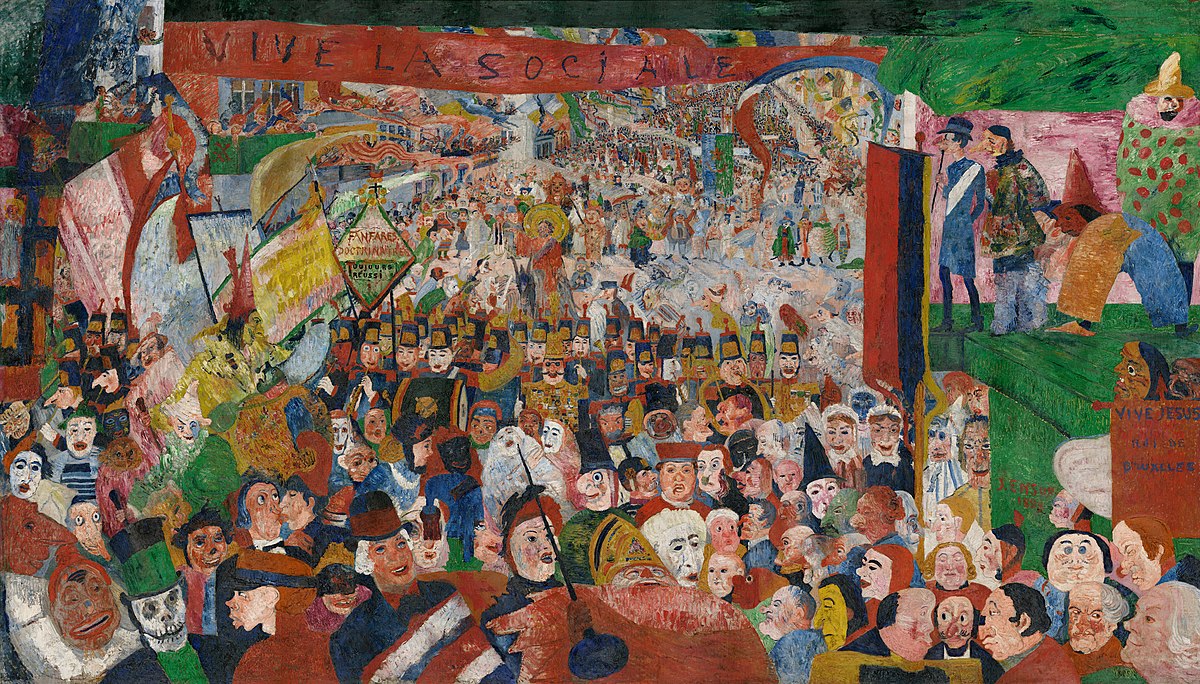A True Yunatic
Some artists don’t paint the world – they reveal the chaos underneath it. James Ensor turned skulls, masks, skeletons and carnival faces into a vibrant, unsettling language. He wasn’t here to please – he was here to expose the theater of society, brushstroke by rebellious brushstroke.
Misunderstood in his time and miles ahead of it, Ensor turned his small attic studio into a portal where the grotesque danced with the divine. He painted not what people wanted to see – but what they were too afraid to admit.
“My art is the art of a madman… because the world itself is mad.” – James Ensor
The Inner Child
Ensor’s inner child never stopped playing dress-up – only the costumes got darker, weirder, truer. Growing up among masks and curios in his mother’s souvenir shop, he developed a fascination with the face behind the face. That child became a painter who laughed at fear and painted it in neon. He kept that eerie sense of fun alive – a trickster with a brush, pointing out the absurdity of power, religion and even death.
Tribbles
Ensor’s tribbles are wild, haunting and gloriously strange:
- Early Expressionist & Surrealist influence – A godfather of weirdness before it had a name.
- The Entry of Christ into Brussels in 01889 – A massive, chaotic parade of masks and mocking humanity – both satire and sacred.
- Skulls, skeletons and saints – A vocabulary of life’s fragility, all done in bright, jarring color.
- Masked figures – Representing hypocrisy, fear and the grotesque theater of everyday life.

Connected with the Yuniverse
Ensor didn’t idealize the universe – he unmasked it. He painted the carnival of life with all its absurdities, revealing the spirit behind the spectacle. For him, masks were not to hide – but to expose the truth behind the performance. He saw beauty in the bizarre and truth in exaggeration.
Spiritual
Ensor saw religion and ritual not just as sacred – but as stagecraft. Yet his work still carries a strange reverence: for death, for ecstasy, for the wild soul underneath it all.
James Ensor reminds us that sometimes the only way to show the truth…
is to put on a mask.